News
A well-known tropical island’s best kept secret
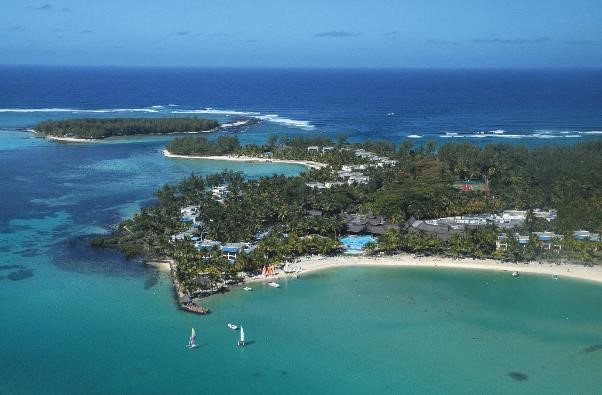
Mauritius has never been punted as a diving destination. Honeymooners go there, families go there to enjoy the world class water sports, golfers go there to enjoy superbly manicured golf courses, but diving? Maybe with your partner on a lazy Sunday. For the Europeans and Scandinavians it’s inexpensive, well run, has fabulous resorts with superb all-inclusive entertainment packages, stunning enclosed lagoons, and white sandy beaches where the kids can safely play. Dive boat launches are among the easiest and most relaxed I have ever experienced anywhere in the world. Boats launch from the lagoon, which is flat calm, and you step onto the boat, either from the beach or off a jetty.
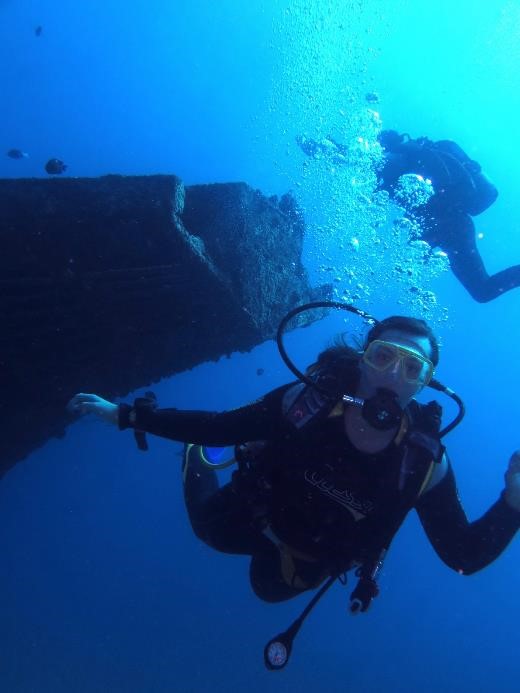 After a thorough briefing on the type of reef and safety procedures in the dive centre, you are good to go. Dive groups are small, and the dive masters and instructors are normally Mauritians, whose safety training and service levels are exceptional. The dive team loads the cylinders on board, and you saunter down to the boat in your wetsuit. You climb onto the boat and kit up your cylinder while the boat putters along to the dive site, normally 5 to 10 minutes away.
After a thorough briefing on the type of reef and safety procedures in the dive centre, you are good to go. Dive groups are small, and the dive masters and instructors are normally Mauritians, whose safety training and service levels are exceptional. The dive team loads the cylinders on board, and you saunter down to the boat in your wetsuit. You climb onto the boat and kit up your cylinder while the boat putters along to the dive site, normally 5 to 10 minutes away.
A backward roll and you are into amazing clarity and breath-taking fish life. In Mauritius, you don’t need to hunt for moray eels. I have countless videos of them hunting and killing on the reefs, and the extremely rare weedy scorpion fish is a superb example.
The visible re-growth of new corals and the re-establishment of coral reefs on this fabulous holiday island playground is undoubtedly world news.
Mauritius reefs are fairly deep on the global scale and to a certain extent they have been protected from the worst of the ravages of global over-heating of the sea.
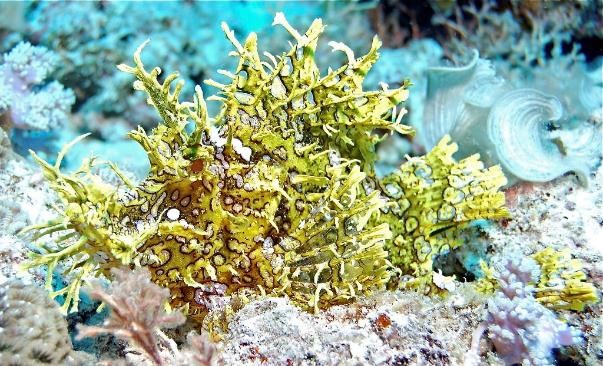
Against the global trend, where worldwide reefs are suffering from damage caused by over-population, over-fishing and pollution, there are tiny acrapora corals breaking through the previously dead areas of reef. Ever cautious, the scientists still have to establish the rate of growth, and the Marine biologists at Reef Mauritius in Pereybere are planning to put down coral growth plates to establish the rate of growth.
It’s also probably the safest place in the world to live right now, with a benign climate, unobtrusive governmental controls and almost zero crime. If you leave your handbag on the seat in the Mahebourg airport public lounge and go back to look for it an hour later after trying to check in unsuccessfully without your passport, it’s still there. If you leave your flip flops on the beach they are still there when you go to fetch them a week later. I have done both.
How does a nation that for centuries depended for its livelihood on sugar farming and subsistence fishing ever change its economy, and encourage its marine-dependent population to protect their resources? Mauritius did, and against the world trend, the coral reefs are re-growing.
The Mauritian Government incentivised its population away from sugar cane towards tourism in the early part of the century, and passed protective legislation to limit damage to the undersea world from over-fishing, agricultural chemical run-off, and to clean up the disposal of sewerage and encourage aquaculture.
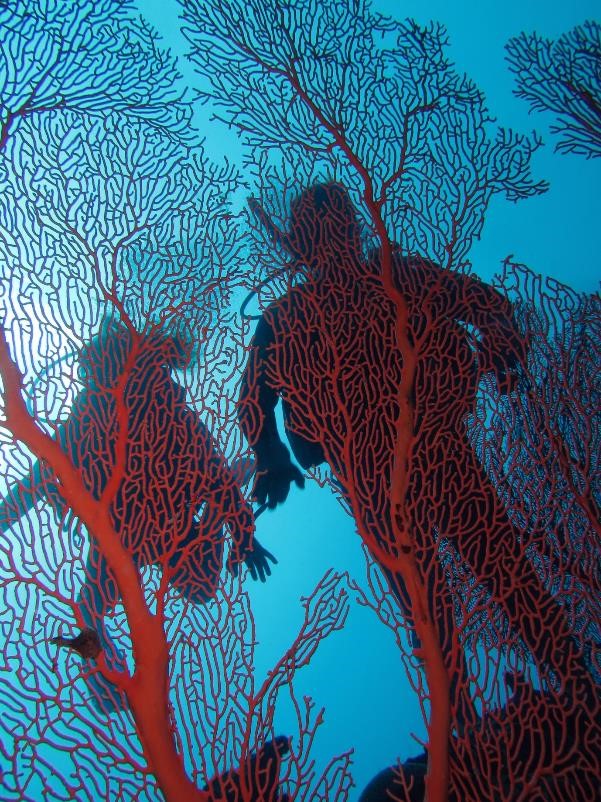
The legislation was clever, as it did not confront the sugar industry with dramatic change. Instead of passing draconian laws, Government introduced incentives that made the sugar companies happy to shift their focus. The IRS, or Integrated Resort Scheme was introduced to entice sugar farming companies to partner with property developers and build spectacular lifestyle resorts around the island. This not only limited sugar planting, with its chemical overspill into the sea, it also enriched the local population, weaning it away from subsistence level fishing.
The government passed legislation to enable the creation of protective tourism-based entities whose main entertainment offering was the marine world. High end five and six star tourist resorts sprang up on the most beautiful of the Island’s beaches, and of course it was in their commercial best interests to protect their primary attraction, and the resorts zealously guard their maritime resources. Most resorts have an affiliated dive operator, and all of them offer superb service to divers. Francois Besson of Diving World is typical of these, with a powerful conservation policy and a strong affiliation to one of the world’s leading resort chains.
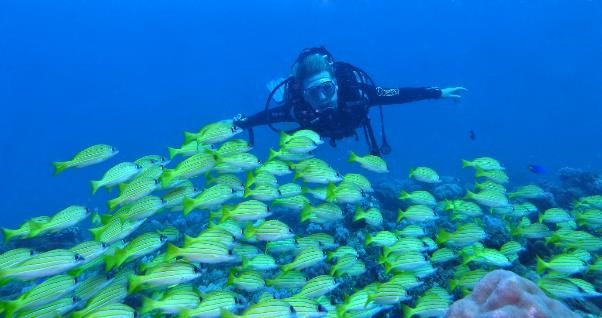
With the construction of Cyber City at Ebene, and the introduction of high speed fibre, the Mauritian population had an alternative source of revenue in the form of IT based activities and above all of call centres. This is a godsend for both English and French speaking companies, as Mauritius has a 95 percent literacy rate, and a highly intelligent labour pool, so the Islanders became less dependent on fishing for their daily meal. Wealth lessens any population’s dependence on its natural resources. The Mauritius supermarkets are packed with shoppers every evening and over weekends. Much easier to buy your food from the local supermarket than to get up at 4am, wheel the engine down to the boat, paddle out in a tiny skiff to load it up, then travel for 2 hours to the local fishing ground.
Mauritius undoubtedly offers some of the world best diving. It is varied, and can be relaxed, dramatic, adventurous or simply fun. The spectacular volcanic structure of the island lends itself to deep diving, where the deco divers can enjoy some spectacular scenery in over 40 metre viz where massive shoals of pelagic fish congregate. Many Europeans spend the winter months in Mauritius, diving with Ocean Spirit, and exploring untouched reefs.
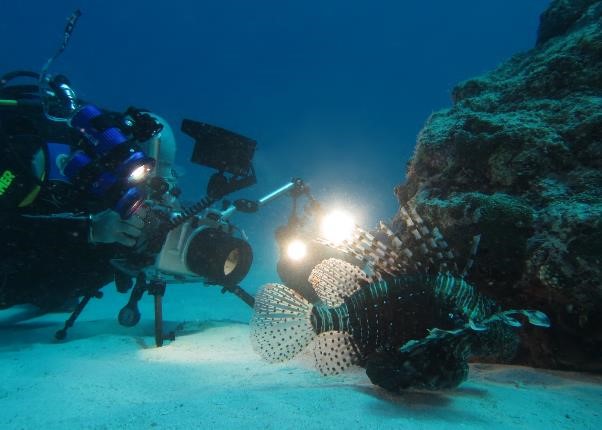
There are sensational dive sites on the East at Bel Mar and in the North in Pereybere where the current is so strong it’s like riding an undersea wave. There are mid-water cleaning stations where the giant tuna come in to be attended by minute cleaner wrasses and damsels, and increasing numbers of hunting barracuda and blue-fin kingfish. There are secret islands off-shore where there are washing machine circular holes filled with the oceanic white-tip sharks who come to spend the daylight hours sleeping, without fear of losing the water-flow over their gills that they need in order to stay alive.
Each reef is different, and all of them have something to offer the recreational diver, and of course it’s a wide-angle photographer’s paradise. In summer the viz can go up to 80 metres, and the lowest I have dived in was 15m viz in mid-winter on a turning tide.
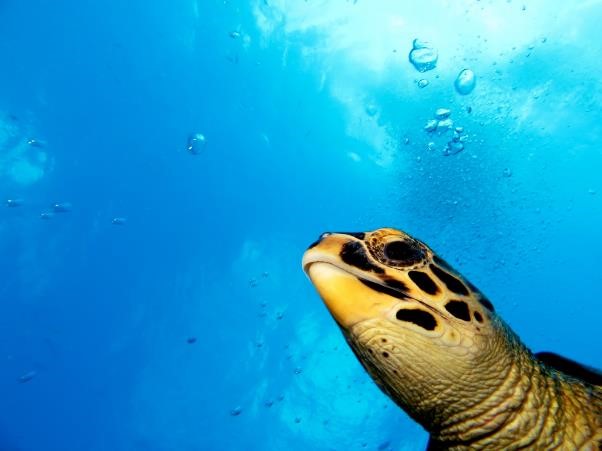
It is really exciting to see the once-dead brown corals sprouting new polyp-tips, and to see the burgeoning growth of the soft corals. With the growth of the soft corals come the coral crabs, banded pipe fish and bower shrimps, so Mauritius is rapidly becoming a paradise for macro photography. With the growth of the corals comes protection for the eggs of the shoaling fusiliers, big eyes, glow-fish, snappers and goat fish, and these are now showing up in massive hatchings that bring in the game fish.
Diving in Mauritius is exciting, and different from anywhere in the world.
It’s an Island with its reefs reborn through the clever intervention of an enlightened government.
[hr style=”single”]
Sources: CORALS and Indo-Pacific Reef Guide by Harry Erhardt and Daniel Knop
Pics: Jill Holloway
Pics: Chrystelle Besson Diving World
© Ocean Spirit
Gear News
Scubapro Free Octopus Promotion 2024

Free Octopus with every purchase of a SCUBAPRO regulator system
Just in time for the spring season, divers can save money with the FREE OCTOPUS SPRING PROMOTION! Until July 31st SCUBAPRO offers an Octopus for free
with every purchase of a regulator system!
Get a free S270 OCTOPUS with purchase of these combinations:
MK25 EVO or MK19 EVO with A700
MK25 EVO or MK19 EVO with S620Ti
MK25 EVO or MK19 EVO with D420
MK25 EVO Din mit S620Ti-X
Get a free R105 OCTOPUS with purchase of the following combinations:
MK25 EVO or MK19 EVO with G260
MK25 EVO or MK17 EVO with S600
SCUBAPRO offers a 30-year first owner warranty on all regulators, with a revision period of two years or 100 dives. All SCUBAPRO regulators are of course certified according to the new European test standard EN250-2014.
Available at participating SCUBAPRO dealers. Promotion may not be available in all regions. Find an authorized SCUBAPRO Dealer at scubapro.com.
More information available on www.scubapro.com.
Blogs
Northern Red Sea Reefs and Wrecks Trip Report, Part 3: The Mighty Thistlegorm

Jake Davies boards Ghazala Explorer for an unforgettable Red Sea diving experience…
Overnight, the wind picked up, making the planned morning dive a bit bumpy on the Zodiacs to the drop point on Thomas Reef. There, we would dive along the reef before descending through the canyon and then passing under the arch before ascending the wall with a gentle drift. The site provided great encounters with more pelagic species, including shoals of large barracuda, tuna, and bigeye trevally.
Once back on the boat, it was time to get everything tied down again as we would head back south. This time, with the wind behind us, heading to Ras Mohammed to dive Jackfish Alley for another great gentle drift wall dive before then heading up the coast towards the Gulf of Suez to moor up at the wreck of the Thistlegorm. This being the highlight wreck dive of the trip and for many onboard, including myself, it was the first time diving this iconic wreck. I had heard so much about the wreck from friends, and globally, this is a must on any diver’s list. Fortunately for us, there was only one other boat at the site, which was a rarity. A great briefing was delivered by Ahmed, who provided a detailed background about the wreck’s history along with all the required safety information as the currents and visibility at the site can be variable.

Kitting up, there was a lot of excitement on deck before entering the water and heading down the shoreline. Descending to the wreck, there was a light northerly current which reduced the visibility, making it feel more like the conditions that can be found off the Welsh coast. At 10m from the bottom, the outline of the wreck appeared as we reached the area of the wreck which had been bombed, as our mooring line was attached to part of the propeller shaft. Arriving on deck, instantly everywhere you looked there were many of the supplies which the ship was carrying, including Bren Carrier tanks and projectiles that instantly stood out.

We headed around the exterior, taking a look at the large propeller and guns mounted on deck before entering the wreck on the port side to take a look in the holds. It was incredible to see all the trucks, Norton 16H, and BSA motorcycles still perfectly stacked within, providing a real snapshot in time.

Overall, we had four dives on the Thistlegorm, where for all of the dives we were the only group in the water, and at times, there were just three of us on the whole wreck, which made it even more special, especially knowing that most days the wreck has hundreds of divers. Along with the history of the wreck, there was plenty of marine life on the wreck and around, from big green turtles to batfish, along with shoals of mackerel being hunted by trevally. Some unforgettable dives.

The final leg of the trip saw us cross back over the Suez Canal to the Gobal Islands where we planned to stay the night and do three dives at the Dolphin House for the potential of sharing the dive with dolphins. The site, which included a channel that was teeming with reef fish, especially large numbers of goatfish that swam in large shoals along the edge of the reef. These were nice relaxing dives to end the week. Unfortunately, the dolphins didn’t show up, which was okay as like all marine life they are difficult to predict and you can’t guarantee what’s going to be seen. With the last dive complete, we headed back to port for the final night where it was time to clean all the kit and pack before the departure flight the next day.

The whole week from start to finish on Ghazala Explorer was amazing; the boat had all the facilities you need for a comfortable week aboard. The crew were always there to help throughout the day and the chefs providing top quality food which was required after every dive. The itinerary providing some of the best diving with a nice mixture of wreck and reef dives. I would recommend the trip to anyone, whether it’s your first Red Sea liveaboard in the Red Sea or you’re revisiting. Hopefully, it’s not too long before I head back to explore more of the Red Sea onboard Ghazala Explorer.

To find out more about the Northern Red Sea reef and wrecks itineraries aboard Ghazala Explorer, or to book, contact Scuba Travel now:
Email: dive@scubatravel.com
Tel: +44 (0)1483 411590
Photos: Jake Davies / Avalon.Red
-

 News3 months ago
News3 months agoHone your underwater photography skills with Alphamarine Photography at Red Sea Diving Safari in March
-

 News3 months ago
News3 months agoCapturing Critters in Lembeh Underwater Photography Workshop 2024: Event Roundup
-

 Marine Life & Conservation Blogs2 months ago
Marine Life & Conservation Blogs2 months agoCreature Feature: Swell Sharks
-

 Blogs2 months ago
Blogs2 months agoMurex Resorts: Passport to Paradise!
-

 Blogs2 months ago
Blogs2 months agoDiver Discovering Whale Skeletons Beneath Ice Judged World’s Best Underwater Photograph
-

 Marine Life & Conservation2 months ago
Marine Life & Conservation2 months agoSave the Manatee Club launches brand new webcams at Silver Springs State Park, Florida
-

 Gear Reviews3 months ago
Gear Reviews3 months agoGear Review: Oceanic+ Dive Housing for iPhone
-

 Gear Reviews2 weeks ago
Gear Reviews2 weeks agoGEAR REVIEW – Revolutionising Diving Comfort: The Sharkskin T2 Chillproof Suit
















